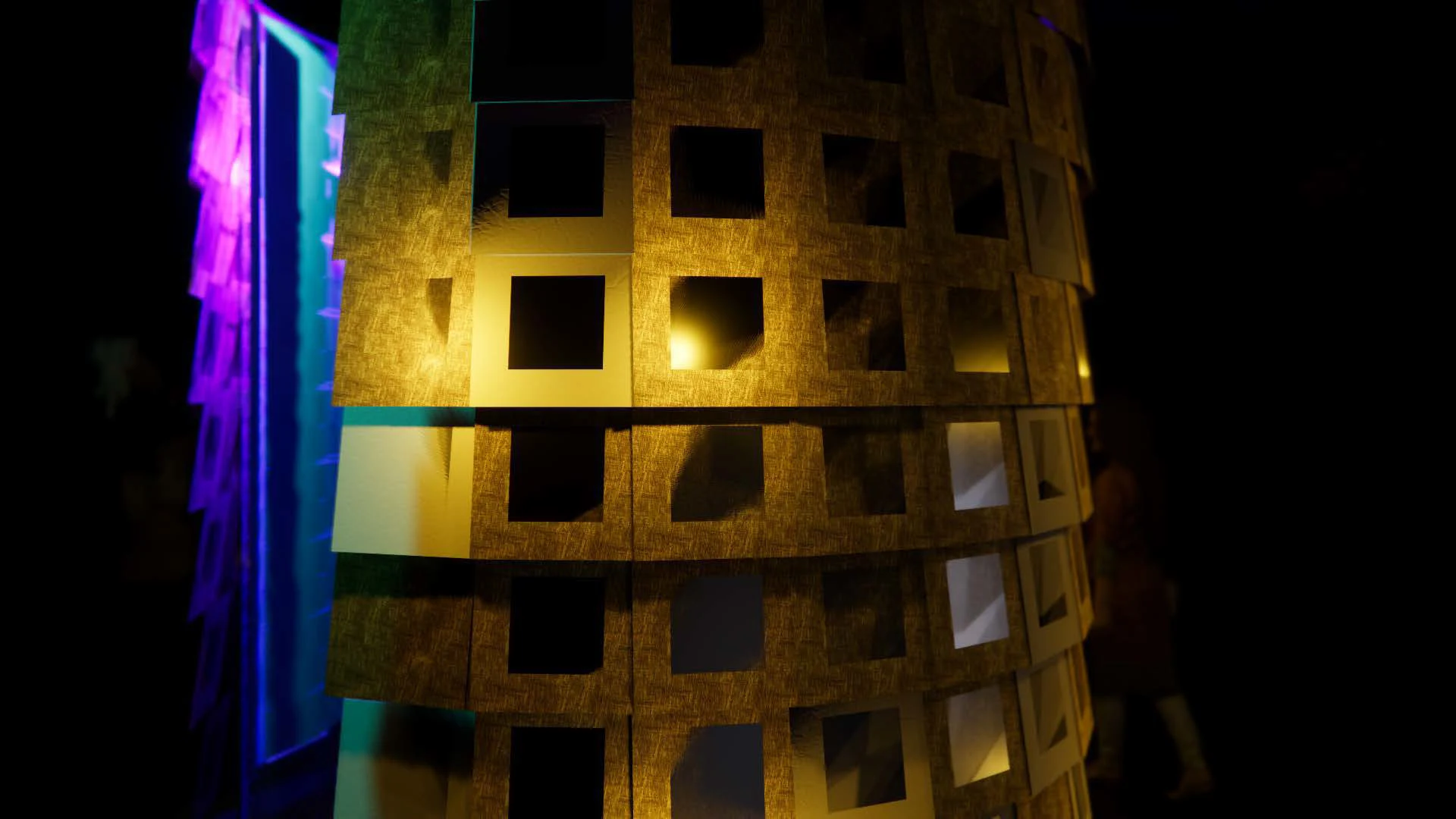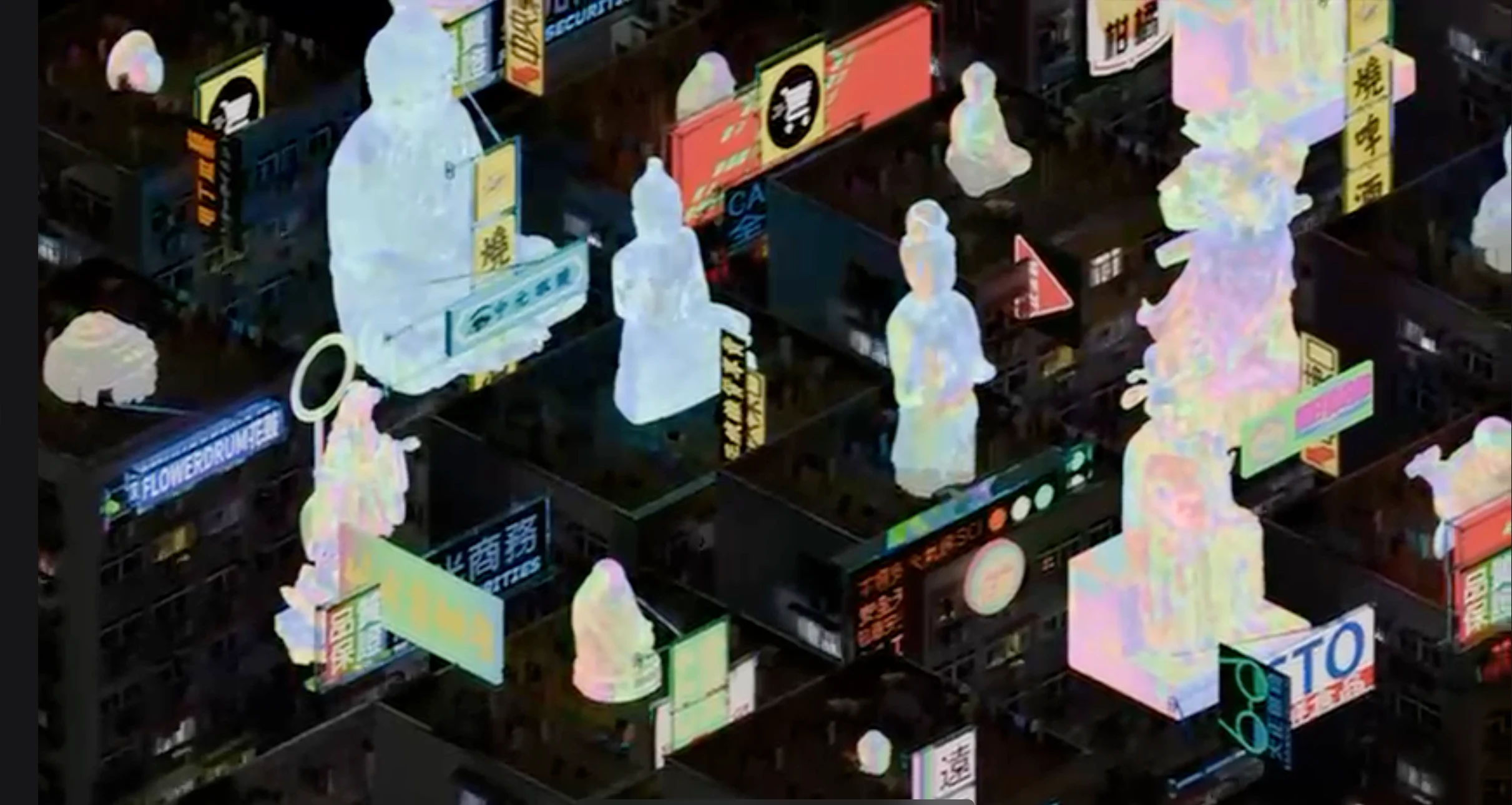Afterlife Economics
Description
Ancestral offerings, burned as gifts for the afterlife, have evolved from simple joss paper money into elaborate replicas of cars, luxury goods, and real estate. Purchased in ritual shops and online marketplaces, these paper objects reflect how the afterlife has become entangled with the consumer desires and material ambitions of the living world—constructing a parallel city built from devotion and aspiration.
Afterlife Economics is an installation work exploring how this alternate city can be reimagined through cycles of handcraft, digital production, and AI interpretation. A circular chamber clad in shimmering foil-paper shingles—echoing traditional ritual objects—encloses projected visions of reimagined urbanism. Through an iterative process that moves between physical making, digital tools, and computational processing, an archive of paper offerings is continuously transformed. The installation generates a speculative metropolis—a city that exists in the space between human ritual, material craft, and machine imagination.
Biography
Our collaborative team bridges Hong Kong and Melbourne, bringing together architects, designers, researchers, and artists.
Vicky Lam is an educator at RMIT Architecture with experience in Melbourne, San Francisco, and New York. A Harvard GSD graduate, her work focuses on inclusive cultural production and civic infrastructure.
Melbourne-based artist Rel Pham, whose work has been exhibited at the Melbourne Triennale 2023. Known for vibrant colours and surreal explorations, Pham draws on old world fables to explore the interconnected nature of our physical and digital realities through video, animation, and installation.
Julian Wong, a Hong Kong-based architect, brings practice experience from Sydney, Hong Kong, and New York.
Silje Howard, an architect and exhibition designer at M+, has delivered major exhibitions including works by Yasumasa Morimura and Robert Rauschenberg.
Lauren Garner is an architect and researcher who founded G-AP, a practice engaging with complex public projects, heritage frameworks, and civic outcomes.
Oscar Jacobs and Oscar Chaplin are emerging designers completing their Master of Architecture at RMIT. Together, this collaboration investigates the relationship between built and digital environments, exploring how contemporary urban life is shaped by material and immaterial systems.
Materials
Foil
Paper
Cloth curtain
Mesh curtain
Velcro
Metal curtain rail
Projector
Bamboo
Organisation
RMIT University, School of Architecture & Urban Design
Sponsor
RMIT University, School of Architecture & Urban Design
Acknowledgments
RMIT University, School of Architecture & Urban Design



